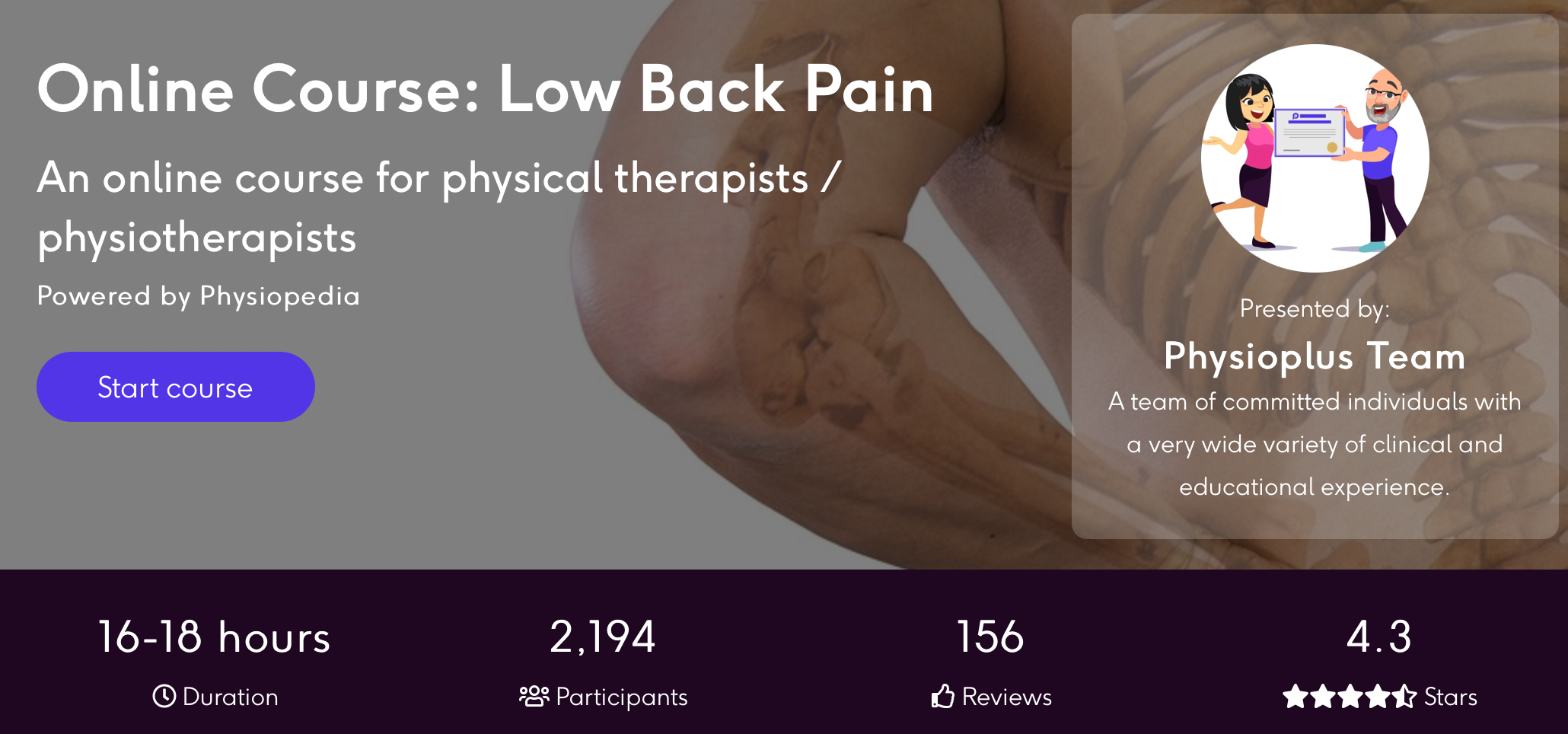Exercise is for sure the best treatment for non-specific low back pain but which setting is best to deliver the exercise plan?
Home is the most accessible place for most people to take part in exercise but is it the most effective way of improving outcomes for people living with non-specific low back pain?
Develop Your Understanding of Low Back Pain
A new systematic review published in the International Journal of Environmental Research and Public Health has tried to answer this question. The aim of the systematic review was to assess the effect of home-based exercise n the pain intensity and functional limitations in low back pain.
Methods
The question at the centre of this systematic review is a broad one and therefore the search strategy reflects this. Four databases were searched (Pubmed, Cochrane Library, Embase and ScienceDirect) using the following keywords:
Low back pain AND (exercise or Physical) AND home
The search was not limited to a date range or language and only and animal studies were excluded. The full search strategy for each database is available in full.
To be included within this review articles had to meet five inclusion criteria.
- Be a RCT
- Participants had to be 16 or older
- Have studies non-specific low back pain
- Evaluate at least one of the outcome measures – pain intensity, functional limitation and measures before and after training
- Treatment had to include home exercise
Two authors screened and reviewed the articles for inclusion and any disagreements were resolved by a third author. The quality of included articles was assessed using the SIGN guidance.
Overall the included studies within the review had good methodological quality with an average score of 75% (40-90) with the most common source of bias being a lack of blinding with assessment.
Results & Clinical Implications
From an initial search result of 24, 699 articles after screening, removal of duplicates and application of inclusion criteria 33 were remained. 10 of these focussed solely on home exercise whereas 23 included home exercise and another setting. Overall 9,588 participants were included within the review with a mean age of 49.3.
26 of the 33 studies used strength-based exercise and 24 of these were combined with stretching. Education also played a part in half of the exercise programmes so too did aerobic exercises. Postural exercises, relaxation and yoga were also included within some of the studies but were much less common.
On average the exercise sessions took place 5 times a week over 11.4 weeks and lasted 63 minutes. But not all studies reported the information. Exercise programmes were also not fully standardised in a third of studies.
Overall it appears that home-based exercise reduces pain intensity and improved functional limitations for patients with non-specific low back pain. The effect size was similar for those who exercised exclusively at home or in combination with another setting.
When comparing the different methods of delivering home exercise it appears that fully supervised exercise is most effective at reducing pain and improving physical limitations however this is marginally better than partially supervised. Unsurprising standardised protocols yield the best results.
In summary home based exercise improves pain intensity and function in people living with non-specific low back pain. Supervised training using a standardised programme is most effective. There is insufficient data to make firm conclusions around duration and frequency of training.
